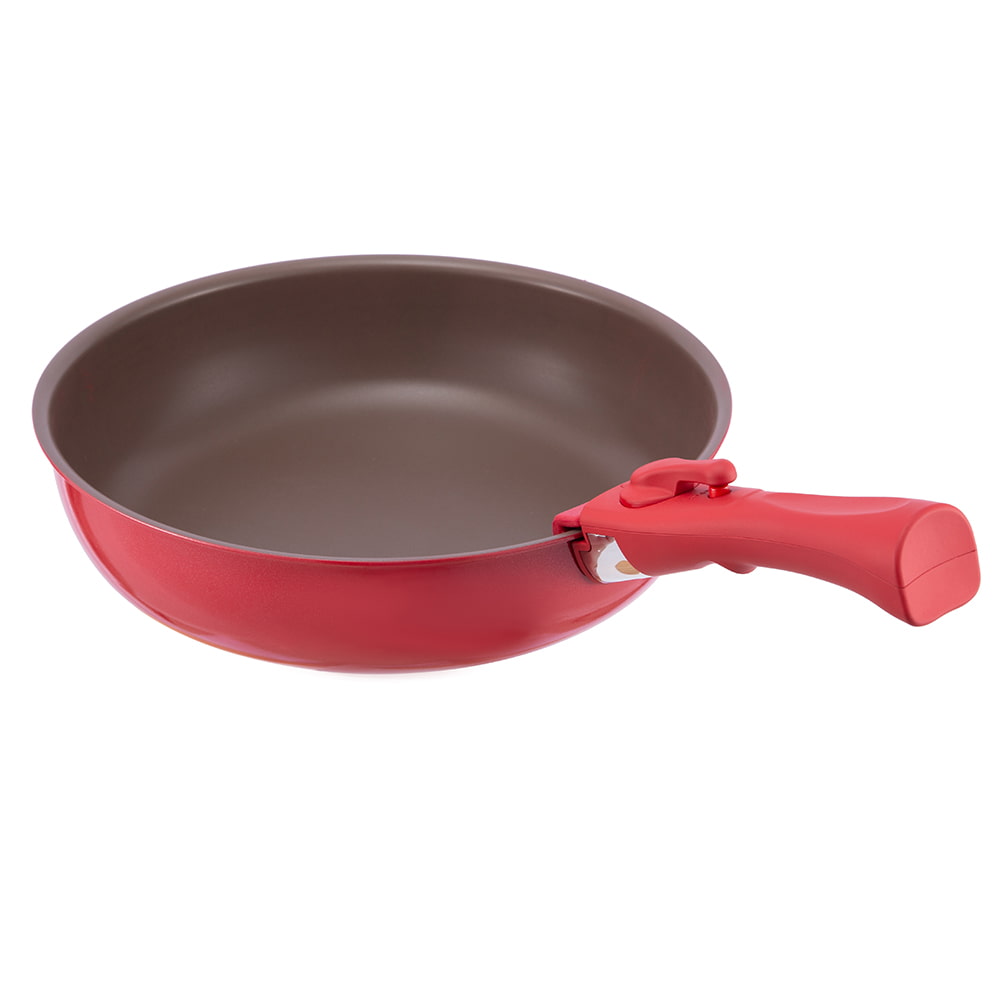The heat conductivity of aluminum significantly impacts the cooking performance of a saucepan pot, making it a popular material choice for such cookware. The ability of aluminum to efficiently transfer heat allows for more precise temperature control and even cooking, leading to better cooking results. In this article, we will explore how the heat conductivity of aluminum influences the cooking performance of a
saucepan pot.
Heat Conductivity of Aluminum:
Heat conductivity is a measure of a material's ability to conduct heat. Metals like aluminum have high thermal conductivity compared to other materials commonly used in cookware, such as stainless steel or cast iron. Aluminum's thermal conductivity is approximately four times higher than that of stainless steel and almost ten times higher than cast iron. This property enables aluminum to rapidly absorb and distribute heat evenly across the cooking surface, making it an ideal choice for saucepans.
Even Heat Distribution:
One of the key advantages of aluminum's high heat conductivity in saucepans is its ability to distribute heat evenly across the entire cooking surface. When the saucepan is placed on a stove or heat source, aluminum quickly absorbs and spreads the heat throughout its body, eliminating hot spots that could lead to uneven cooking. As a result, the food in the saucepan is cooked consistently, minimizing the risk of burning or undercooking certain areas.
Precise Temperature Control:
The excellent heat conductivity of aluminum also translates to precise temperature control during cooking. As the heat is evenly distributed, adjustments to the heat source or flame are quickly reflected in the saucepan's temperature. This responsiveness allows chefs and home cooks to have better control over the cooking process, whether it's bringing liquids to a gentle simmer or adjusting heat levels for delicate sauces.
Energy Efficiency:
Aluminum's efficient heat conductivity contributes to energy efficiency in cooking. The quick and uniform heat distribution means that less energy is wasted during the cooking process. With a well-conductive saucepan, heat is delivered directly to the food, reducing the cooking time and overall energy consumption, which can be beneficial for both the environment and energy bills.
Reduced Cooking Time:
The rapid and even heat distribution in aluminum saucepans leads to reduced cooking times. As the heat reaches the food quickly and evenly, the cooking process is accelerated. This can be particularly advantageous in busy kitchens or when preparing meals with time constraints.
-6.jpg)
Sensitive to Heat Changes:
While aluminum's heat conductivity is a significant advantage, it can also be a potential drawback in certain situations. Aluminum cookware is very responsive to heat changes, which can be advantageous for precise cooking, but it may also lead to overheating or scorching if not monitored carefully. The sensitive nature of aluminum to heat changes necessitates careful attention while cooking, especially with delicate dishes or recipes that require gradual heating.
Reactivity with Acidic Foods:
Another consideration when using aluminum saucepans is their reactivity with acidic foods. Aluminum can react with acidic ingredients like tomatoes, vinegar, or citrus, causing a metallic taste in the food and discoloration of the saucepan's surface. To prevent this, most aluminum saucepans undergo a process called anodizing, which creates a non-reactive and non-stick surface.
Incorporating Aluminum in Saucepan Design:
Manufacturers often incorporate aluminum in saucepan design in various ways. Some saucepans feature an aluminum core sandwiched between layers of stainless steel. This combination leverages the best of both materials: the even heat distribution of aluminum and the durability and non-reactivity of stainless steel. Other saucepans may have an aluminum disk or plate at the bottom, which provides excellent heat distribution at the base of the pot.
The heat conductivity of aluminum significantly impacts the cooking performance of a saucepan pot, offering advantages such as even heat distribution, precise temperature control, energy efficiency, and reduced cooking times. Its responsiveness to heat changes, while beneficial for precise cooking, requires careful attention during the cooking process. Additionally, the reactivity of aluminum with acidic foods can be mitigated through proper design and anodizing. Overall, aluminum saucepans are a popular choice for both professional chefs and home cooks due to their excellent heat conductivity and ability to deliver consistently well-cooked dishes.
 No. 1, Jingwei Road, Yangcheng Lake Town, Xiangcheng District, Suzhou City, China
No. 1, Jingwei Road, Yangcheng Lake Town, Xiangcheng District, Suzhou City, China [email protected]
[email protected] +86-13913553688
+86-13913553688
 search
search
 中文简体
中文简体 English
English русский
русский Français
Français Español
Español 日本語
日本語






-6.jpg)
-4.jpg)
-1.jpg)

-3.jpg)
-5.jpg)

-3.jpg)
-9.jpg)
-3.jpg)
-14.jpg)

